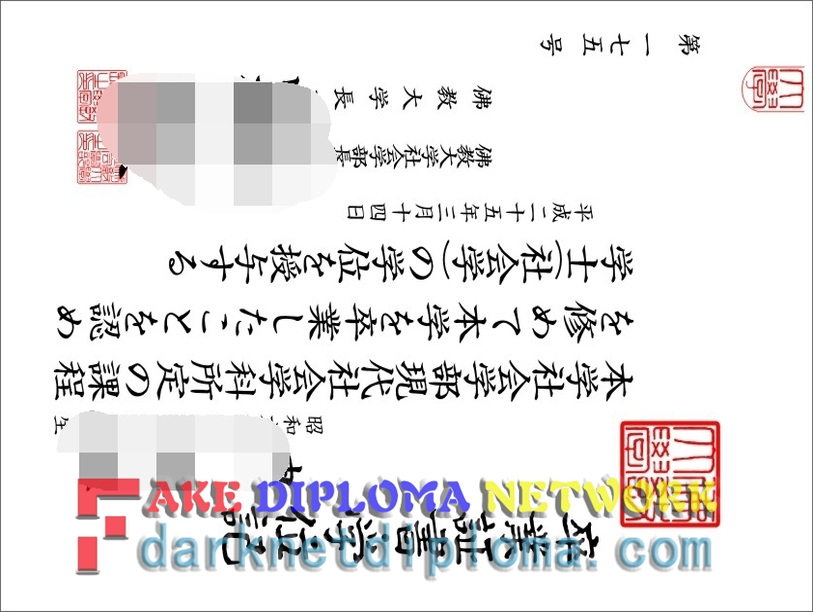Introduction
Bukkyo University, known for its rich history and academic prestige in Kyoto, Japan, attracts many students from around the world. However, with the rise of counterfeit diplomas, it's essential to know how to differentiate between an authentic and a fake Bukkyo University diploma. This blog post will guide you through the key features to look out for when verifying your diploma.
Common Features of a Genuine Diploma
1. Official Seal and Signature
A genuine Bukkyo University Diploma should bear both the official seal and signature from the university president or registrar. These seals are typically embossed with fine details that cannot be easily replicated on printed diplomas.
- The official seal is round, featuring the Japanese characters for "Bukkyo Daigaku."
- The signature is usually in cursive script, and it may vary slightly between years or different officials.
2. Watermark and Paper Quality
High-quality paper with a distinct watermark is one of the hallmarks of an authentic diploma. When held up to light, you should see a faint but clear "BUKKYO UNIVERSITY" imprint throughout the page. The texture of the paper will be smooth yet slightly textured, which feels different from standard printing paper.
3. Microprinting and Fine Details
Microprinting is commonly used on genuine diplomas. If you use a magnifying glass to examine small text around the edges or in corners, such as "Bukkyo University" near the top of the diploma, it should appear clear and sharp with fine lines that are not easily blurred.
4. Color Consistency
The color consistency throughout the diploma is critical. A fake may have slight variations in shades or hues, especially on the border and text s. The authentic diploma will feature a uniform navy blue background with gold accents for university details, giving it an elegant appearance.

Common Features of a Fake Diploma
1. Blurry Seals and Signatures
A common giveaway for counterfeit diplomas is blurry seals and signatures. While printing technology has advanced, the texture and detail in these areas should be carefully examined. If they appear too uniform or slightly off, it could indicate that the diploma was printed rather than engraved.
2. Lack of Watermark or Paper Quality
Counterfeit diplomas often use thinner, cheaper paper with no watermark. When held up to light, you might not see any distinct imprint, and the texture may feel smoother or more brittle compared to genuine diplomas.
3. Fuzzy Microprinting
If microprinted text is blurry or fuzzy under magnification, it could be a sign of a fake diploma. The font should be sharp, with fine lines that are clearly defined.
How to Verify Your Diploma
Contact the Registrar's Office: Reach out directly to Bukkyo University’s registrar via email or phone to confirm if your name is listed on their records.
Check Online Listings: Visit the university’s official website and look for a where you can verify diplomas by entering your student ID or other identifying details.
Conclusion
By carefully examining the seal, signature, paper quality, watermark, and microprinting, you can confidently distinguish between an authentic and fake Bukkyo University Diploma. Always cross-reference with official university records to ensure the accuracy of your document.